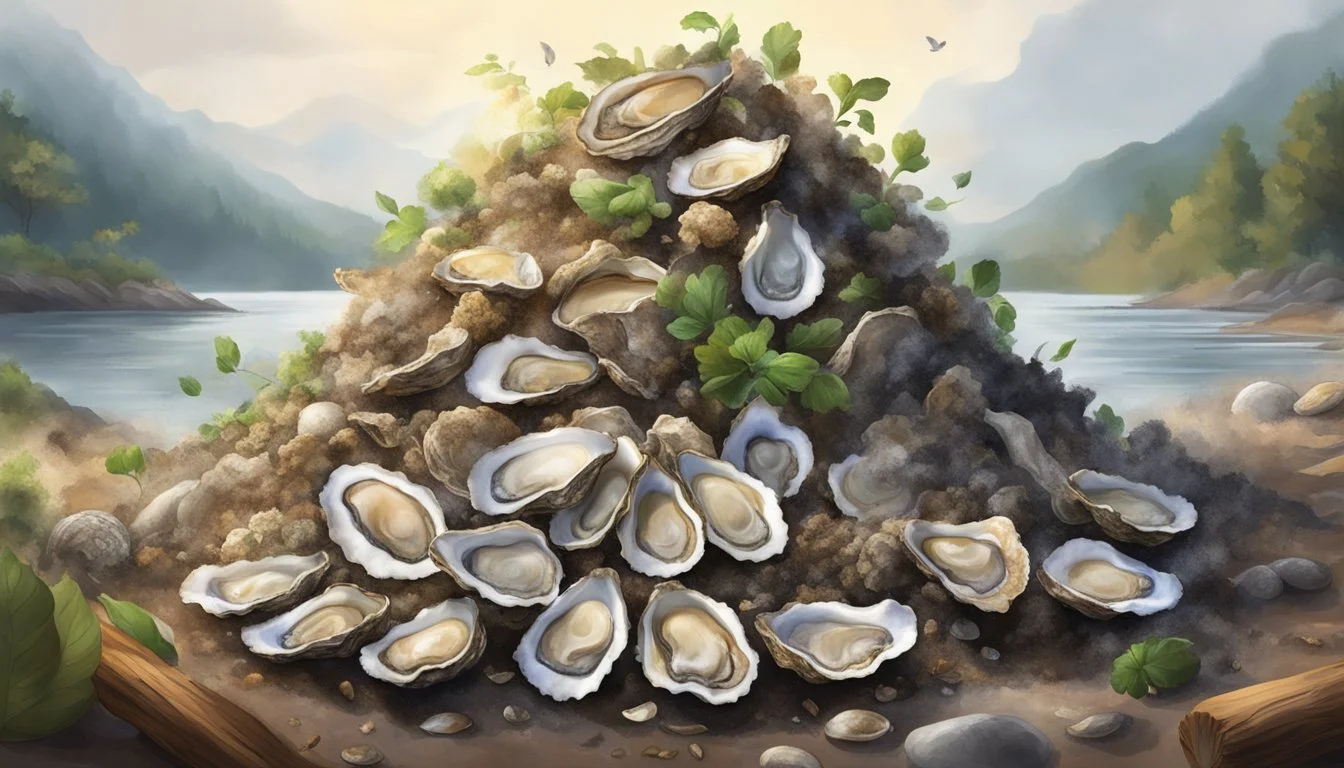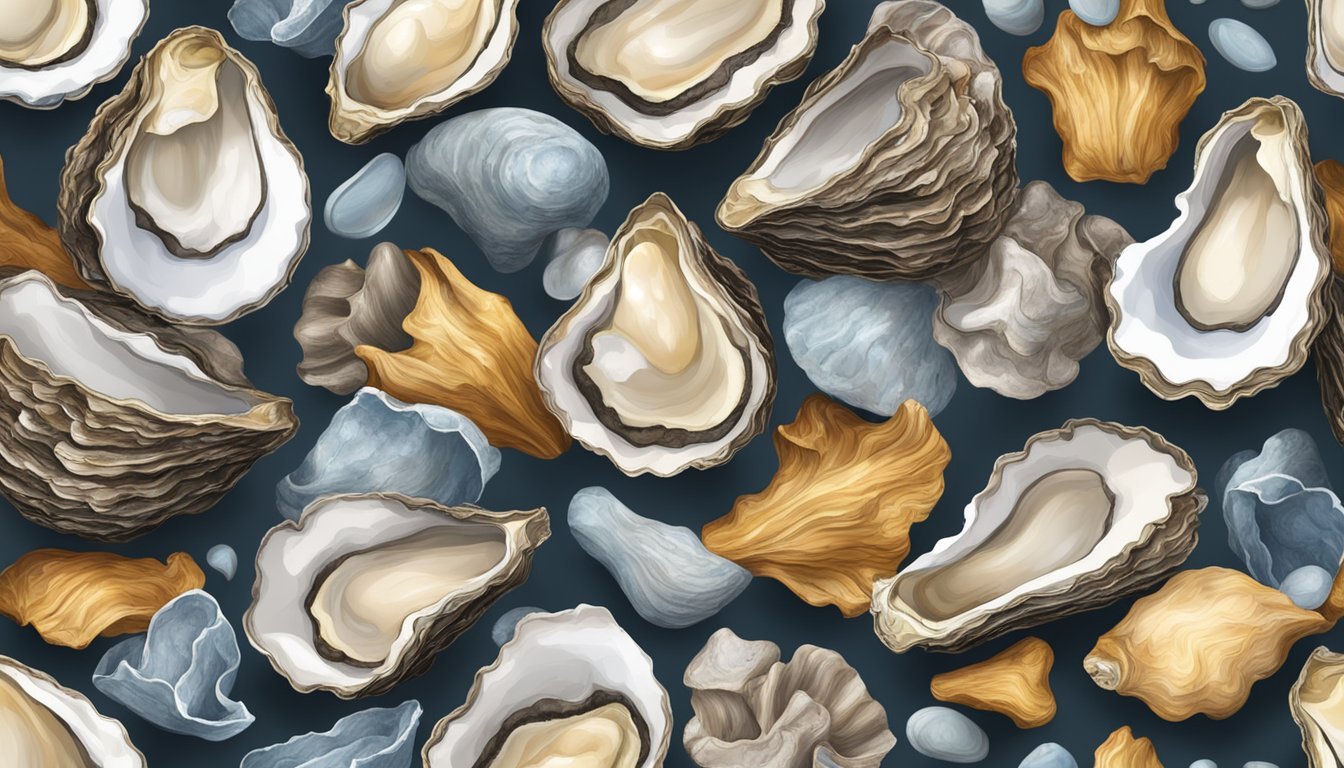Can You Compost Oyster Shells?
The Essential Guide to Shell Composting
Oyster shells are a common byproduct of seafood consumption, and they possess several properties that can be beneficial to a garden. Rich in calcium carbonate, these shells, when composted, serve as a valuable amendment to soil. Composting oyster shells not only contributes essential nutrients that promote healthy plant growth but also aligns with sustainable practices by reducing landfill waste.
The process of composting oyster shells involves breaking them down into smaller, more manageably sized pieces that can decompose over time. Once added to a compost pile, these shells gradually release minerals into the compost that, in turn, enhance the soil's structure and fertility when applied to a garden. It is essential, however, to clean the shells properly before composting to avoid attracting pests and to ensure they break down effectively.
While it may take longer for oyster shells to decompose compared to other organic materials, their longevity in compost can provide long-term benefits to the soil. Incorporating oyster shells into compost is a practical step for gardeners looking to improve the sustainability and productivity of their gardening efforts.
Understanding Composting
In the process of composting, organic materials break down through the action of microorganisms, resulting in a nutrient-rich soil amendment that benefits plant growth. This section will discuss the basic principles of composting and the specific advantages of incorporating oyster shells into compost bins.
Basics of Composting
Composting is a natural process where organic matter is decomposed by microorganisms in the presence of oxygen. The primary components of compost are green materials, like fruit and vegetable scraps, which provide nitrogen, and brown materials, such as leaves and twigs, which supply carbon. Proper composting requires a balance of these elements to create an environment where microorganisms can thrive. Biodegradable waste breaks down effectively in compost, turning what would be landfill waste into a valuable organic resource.
Necessary Component Role in Composting Examples Green materials Provides nitrogen Fruits, vegetables, grass clippings Brown materials Provides carbon Leaves, branches, paper Microorganisms Break down organic matter Bacteria, fungi, worms Oxygen Supports the decomposition process Ensured by aerating the compost pile
Benefits of Adding Oyster Shells to Compost
Oyster shells contribute valuable benefits when added to compost. They are an alkaline material, which can help to balance the pH level of compost, especially if it tends towards acidic due to the presence of certain organic materials. As composting progresses, the shells break down slowly and release calcium, which is crucial for plant health. Additionally, the coarse texture of oyster shells aids in enhancing soil structure, promoting better water retention and air flow.
However, it's important to prepare oyster shells prior to adding them to compost by cleaning and crushing them to increase the surface area for microorganisms to work on. With these preparations, oyster shells serve as a multifunctional additive to the composting process.
Oyster Shells in Gardening
As a sustainable resource, oyster shells offer significant benefits to gardening practices, primarily through enriching soil with calcium and adjusting soil pH levels.
Role of Calcium in Plant Health
Oyster shells, when used in gardening, contribute calcium carbonate—a valuable nutrient that strengthens plant structure, particularly in cell walls and membranes. Calcium is essential for the plant's development, aiding in root and leaf growth, as well as improving fruit quality. Crushed oyster shells, as a slow-release fertilizer, gradually introduce this element into the soil, counteracting calcium deficiencies which can lead to disorders like blossom end rot in tomatoes and other vegetables.
Using Oyster Shells to Adjust Soil pH
Gardens with acidic soil benefit from the addition of crushed oyster shells, as they serve as a natural way to raise soil pH and reduce acidity. High acidity in soil can limit the availability of essential nutrients to plants. Incorporating crushed oyster shells into the soil can subtly alter the pH, making it more alkaline, thus more conducive to nutrient absorption.
Soil Condition Application of Oyster Shells Acidic Soil Use to raise pH Balanced Soil Use sparingly as preventive maintenance Alkaline Soil May not be necessary
It's worth noting that alterations to soil pH should be done gradually, monitoring and testing the soil periodically, to avoid disrupting plant growth.
Prepping Oyster Shells for Compost
Before incorporating oyster shells into compost, it’s crucial to prepare them properly to enhance decomposition and eliminate contaminants. This involves cleaning and crushing the shells, followed by salt removal and sterilization to ensure safe and effective composting.
Cleaning and Crushing Shells
Cleaning the oyster shells is the first step to remove any organic matter that might be attached. Shells should be rinsed thoroughly under running water to dislodge debris. After cleaning, crushing the shells is recommended. Small, broken-down pieces decompose more swiftly than whole shells. Crushing can be done by wrapping the shells in a cloth and gently hammering them until the desired size is reached.
Removing Salt and Sterilizing
Oyster shells carry excess salt, which can be detrimental to some plants. To remove it, they can be soaked in fresh water for 24 hours, with the water changed several times. After desalination, it's vital to sterilize the shells to kill any pathogens. One method is to spread them on a baking sheet and bake in an oven at 250 degrees Fahrenheit for 10 minutes. This process ensures the shells are clean and safe to add to a compost pile.
Incorporating Shells Into Compost Piles
Incorporating oyster shells into compost piles can benefit the composting process by enhancing nutrient balance and improving structural properties. Oyster shells contribute important elements and can optimize the environment for decomposition.
Balancing Nitrogen and Carbon
A compost pile requires a balanced ratio of carbon to nitrogen (C ratio) for effective decomposition. Oyster shells are rich in calcium and other minerals, though they do not directly contribute to this N ratio, they can play a supporting role. Typically, a compost pile should maintain a C ratio of about 30:1. Organic substances, such as vegetable scraps and grass clippings, provide nitrogen, while brown materials like leaves and straw offer carbon.
Incorporation of Oyster Shells:
Layering: Integrate a layer of crushed oyster shells amid your green (nitrogen source) and brown materials to promote balanced decomposition.
Calcium Supply: Shells slowly release calcium, which can balance pH levels and support the growth of decomposing microbes.
Encouraging Aeration and Drainage
Proper aeration is crucial to avoiding anaerobic conditions which hinder the composting process. Oyster shells, when crushed and mixed into a compost pile, improve the structure of the compost, enhancing both aeration and drainage. Increased aeration encourages the activity and proliferation of aerobic microbes responsible for breaking down organic matter.
Benefits of Shells for Compost Structure:
Aeration: Crushed shells create air pockets within the compost pile, allowing for increased oxygen flow.
Drainage: By improving the texture of the compost, shells help to prevent waterlogging, which can stifle microbial activity and slow decomposition.
Additional Uses for Oyster Shells
Beyond enriching compost heaps, oyster shells serve several other garden and aesthetic functions due to their unique composition and texture.
As a Mulch Alternative
Oyster shells can be a practical substitute for traditional mulch. When used as mulch, they discourage pests because their sharp edges deter slugs and snails. Furthermore, these shells enhance soil quality by providing slow-release calcium as they break down, which benefits soil structure and plant health. Their pale color reflects sunlight, which can help to regulate soil temperature.
Crafting and Ornamental Purposes
In the realm of arts and crafts, oyster shells are often transformed into beautiful decorations. They are sturdy yet easy to paint, making them ideal for ornaments and bespoke art pieces. Landscaping enthusiasts also incorporate oyster shells into outdoor spaces for an elegant, coastal aesthetic. They can outline flower beds, create garden paths, or serve as an eye-catching addition to water features.




